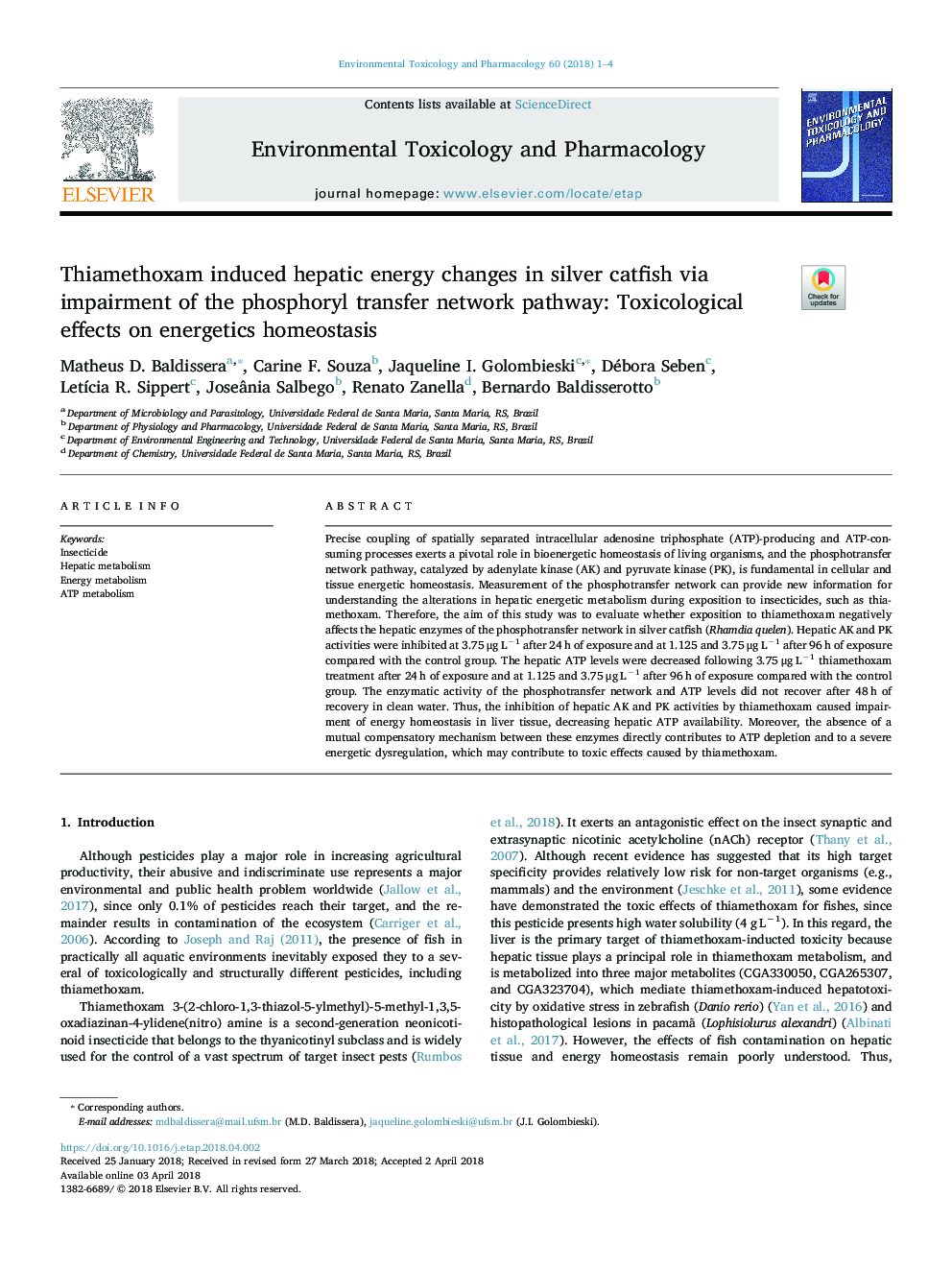| Article ID | Journal | Published Year | Pages | File Type |
|---|---|---|---|---|
| 8545840 | Environmental Toxicology and Pharmacology | 2018 | 4 Pages |
Abstract
Precise coupling of spatially separated intracellular adenosine triphosphate (ATP)-producing and ATP-consuming processes exerts a pivotal role in bioenergetic homeostasis of living organisms, and the phosphotransfer network pathway, catalyzed by adenylate kinase (AK) and pyruvate kinase (PK), is fundamental in cellular and tissue energetic homeostasis. Measurement of the phosphotransfer network can provide new information for understanding the alterations in hepatic energetic metabolism during exposition to insecticides, such as thiamethoxam. Therefore, the aim of this study was to evaluate whether exposition to thiamethoxam negatively affects the hepatic enzymes of the phosphotransfer network in silver catfish (Rhamdia quelen). Hepatic AK and PK activities were inhibited at 3.75â¯Î¼gâ¯Lâ1 after 24â¯h of exposure and at 1.125 and 3.75â¯Î¼gâ¯Lâ1 after 96â¯h of exposure compared with the control group. The hepatic ATP levels were decreased following 3.75â¯Î¼gâ¯Lâ1 thiamethoxam treatment after 24â¯h of exposure and at 1.125 and 3.75â¯Î¼gâ¯Lâ1 after 96â¯h of exposure compared with the control group. The enzymatic activity of the phosphotransfer network and ATP levels did not recover after 48â¯h of recovery in clean water. Thus, the inhibition of hepatic AK and PK activities by thiamethoxam caused impairment of energy homeostasis in liver tissue, decreasing hepatic ATP availability. Moreover, the absence of a mutual compensatory mechanism between these enzymes directly contributes to ATP depletion and to a severe energetic dysregulation, which may contribute to toxic effects caused by thiamethoxam.
Related Topics
Life Sciences
Environmental Science
Health, Toxicology and Mutagenesis
Authors
Matheus D. Baldissera, Carine F. Souza, Jaqueline I. Golombieski, Débora Seben, LetÃcia R. Sippert, Joseânia Salbego, Renato Zanella, Bernardo Baldisserotto,
